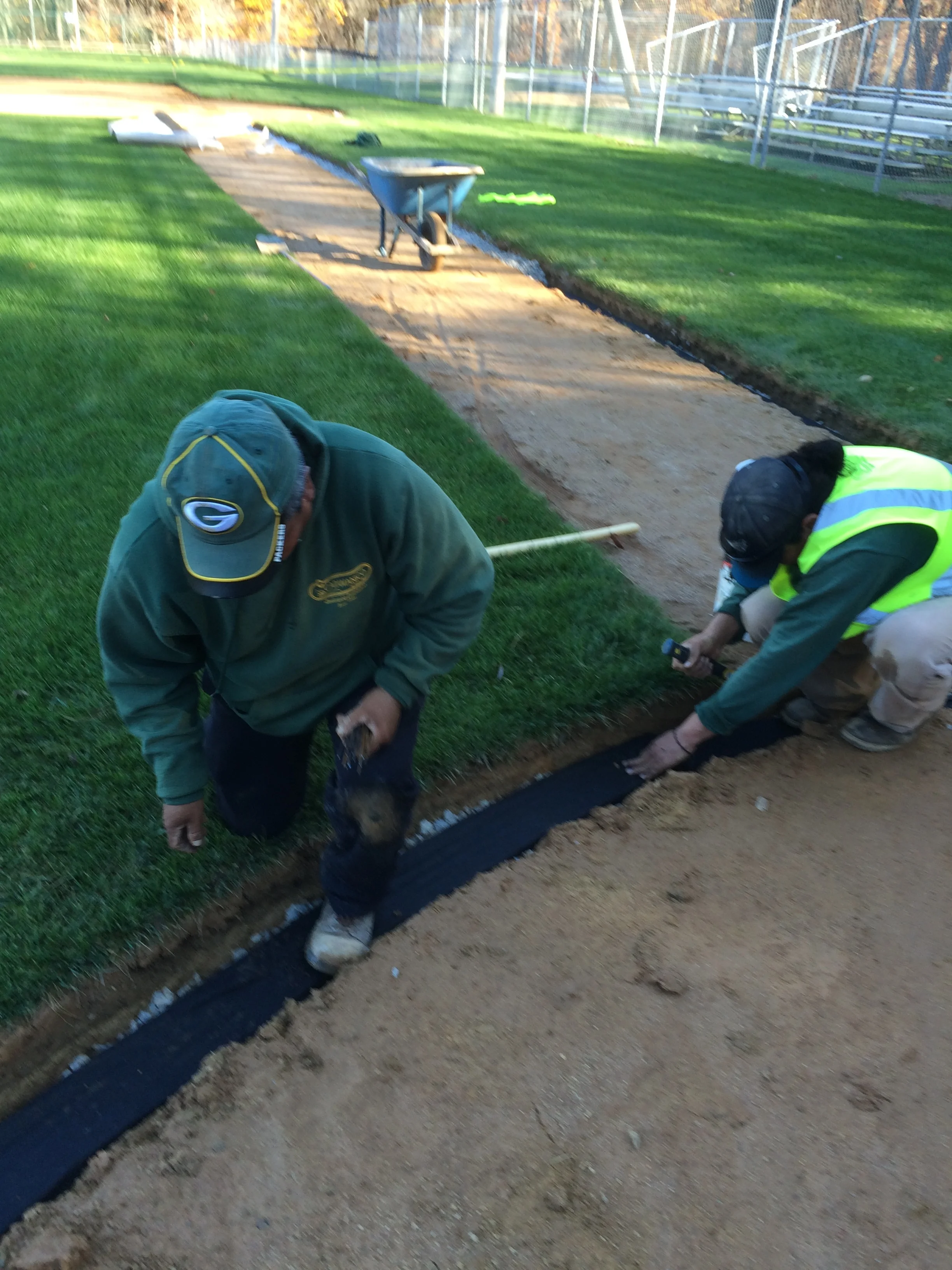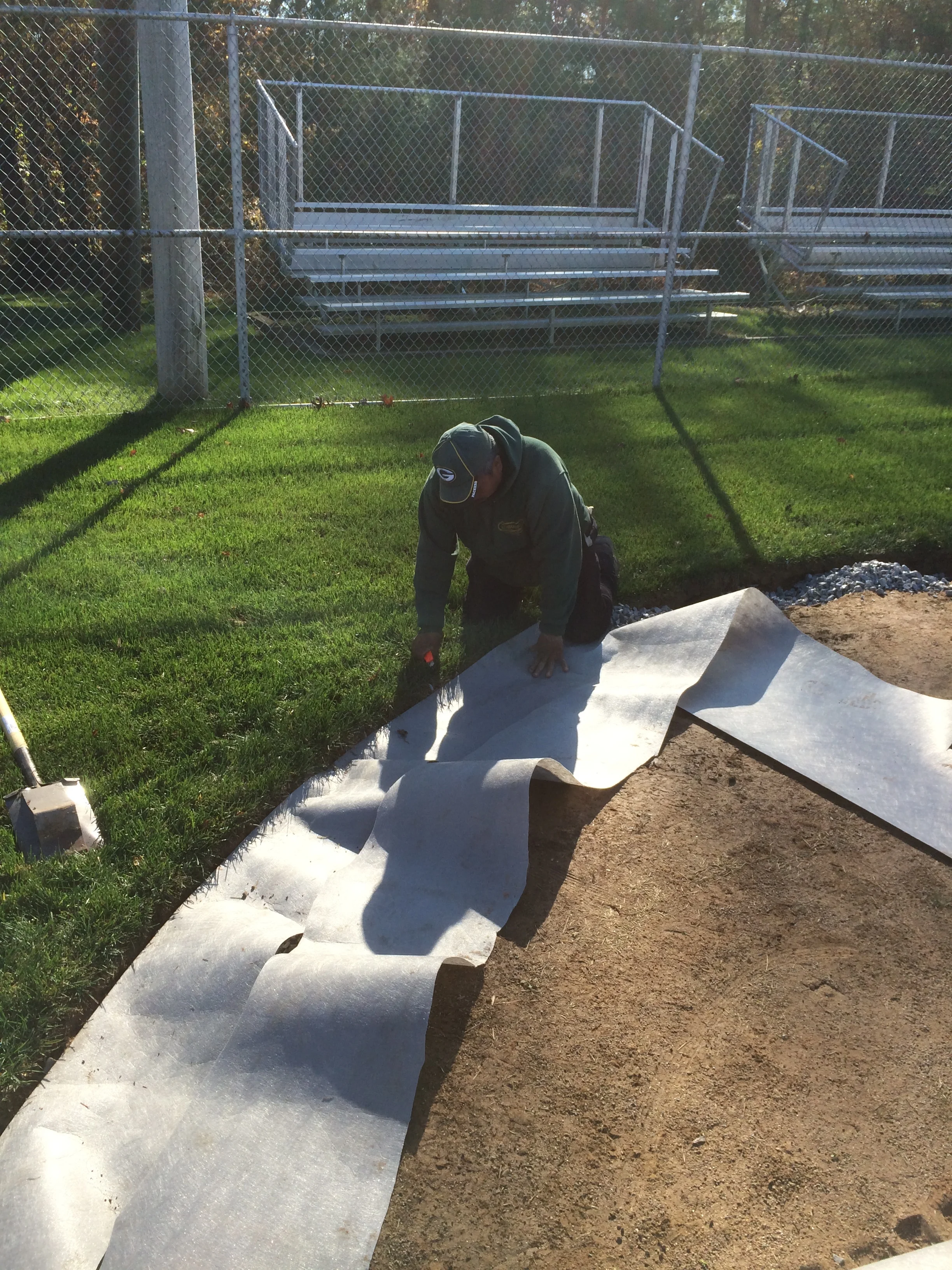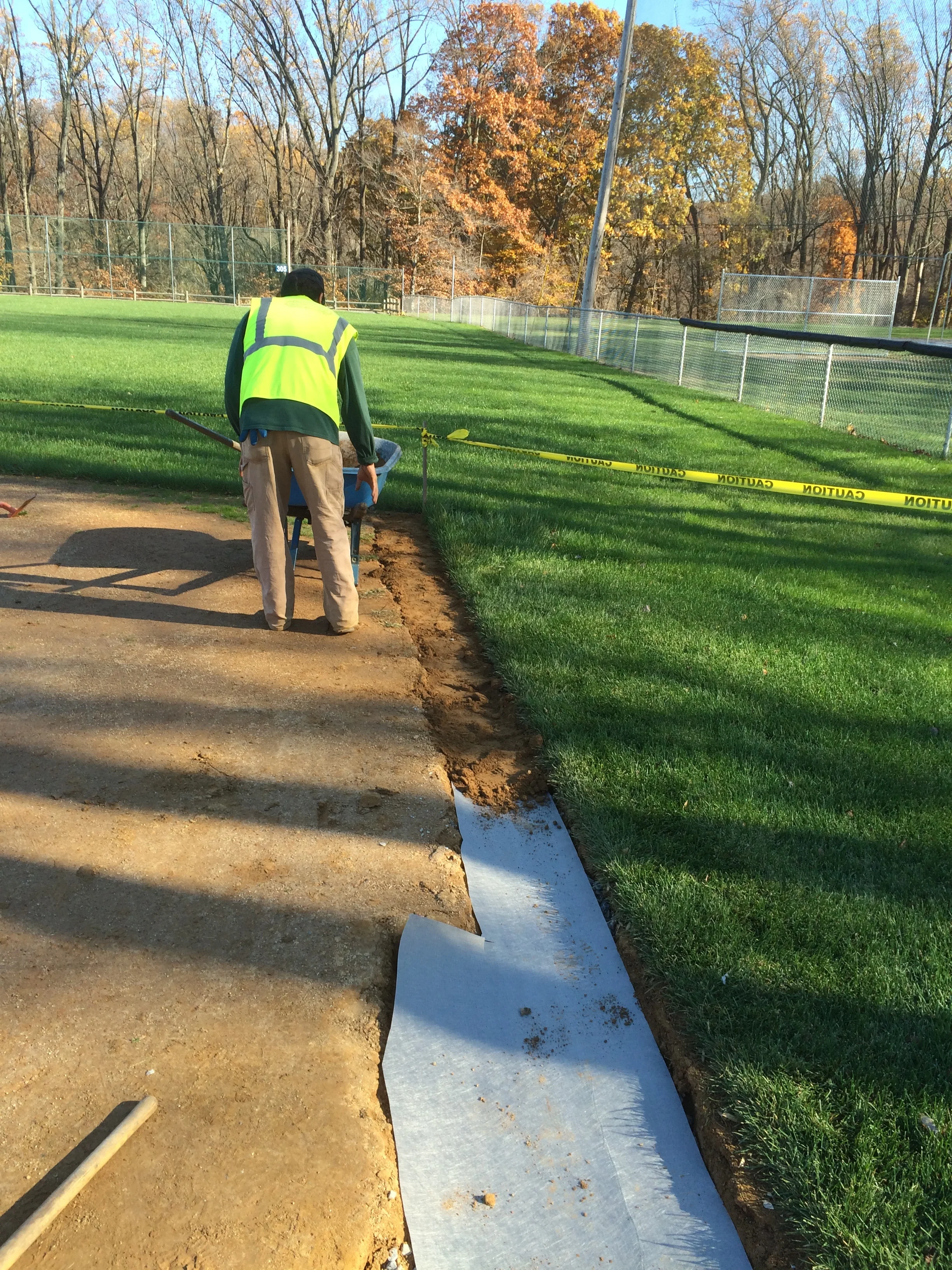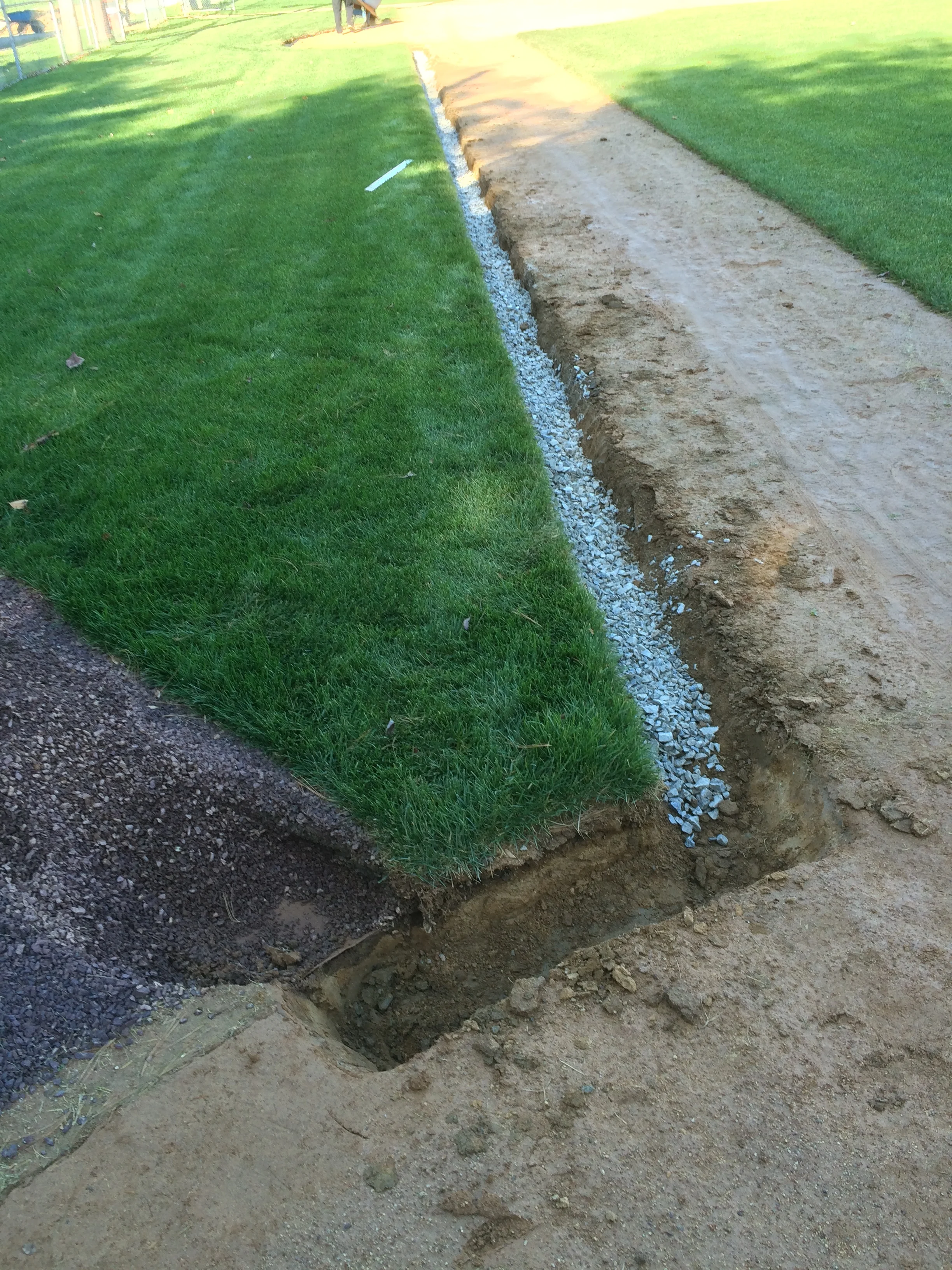This series of pictures shows the remedy to a "built-in" problem on a newly renovated infield.
There is a slight "crown" or higher elevation design through the middle of the infield thus creating a slight pitch to and on the base paths. The problem arose when the new sod was laid in the foul territory around the first and third baselines raising the elevation next to the base path and holding the water on the infield mix, creating puddling, a baseball coach's worst nightmare. As there was no subsurface "underdrain" under the infield we designed and installed the drainage system shown in the following pictures.
A 9"deep x 12" wide trench was excavated along all the low areas on the base paths and around the radius at home plate, fabric coated horizontal pipe was installed in the bottom of the trench. "Pea gravel " was then brought to within 3" of the infield mix. Filter fabric and 3" of compacted infield mix was then reinstalled to restore the base path to its original elevation.The new drainage system was tied into an existing perimeter U drain along the fencing.
This infield is now in play the afternoon after a full day of rain. Problem solved!










